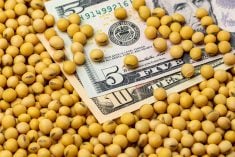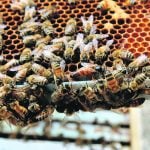Western Canadian feeder cattle prices were $2 to $4 per hundredweight (cwt) higher last week on average. Deferred live cattle futures made fresh contract highs on Friday, resulting in steady demand in the feeder complex.
Run-of-the-mill steer calves weighing 575 pounds averaged $160/cwt in central Alberta; calves averaging 650 lbs. brought back $155/cwt. The April 2012 live cattle futures are only a $2 premium to the June contract; therefore, spreads between the feeder weight categories are also relatively narrow.
There appears to be a fair amount of yearlings coming on the market for this time of year. Abundant forage supplies caused some producers to keep cattle longer than normal. Reports state that some groups of cattle are quite fleshy and feedlot operators are discounting these cattle due to inefficient weight gains. Replacements over 800 lbs. did not experience the price increase of lighter-weight calves because some cattle sold at a discount, bringing down the average.
Read Also

U.S. grains: Soy futures post biggest monthly gain in nearly five years on China trade optimism
U.S. soybean futures climbed to a 15-month high and posted their biggest monthly gain in nearly five years on Friday following a rally fueled by the prospect of revived exports to China.
Seasonally, auction market volumes increase at this time of year and larger available supplies could temper the upward momentum. Barley prices jumped $4 per tonne last week and feedlot operators are factoring in a higher cost-per-pound gain. Producers should keep in mind that the first half of November is expected to be colder and wet. This usually results in a softer feeder market for a week or two because feedlot operators factor in higher deathloss.
The Dow Jones Industrial Average climbed to its highest level since Aug. 5 on Monday. At the same time, nearby crude oil is now over $90 per barrel. It appears the economy has absorbed the financial crisis and business expansion is expected over the next two quarters. This will bode well for the cattle complex as stronger retail sales will enhance beef demand.
— Jerry Klassen is a commodity market analyst in Winnipeg and maintains an interest in the family feedlot in southern Alberta. He writes an in-depth biweekly commentary, Canadian Feedlot and Cattle Market Analysis, for feedlot operators in Canada. He can be reached by email at [email protected] or at 204-287-8268 for questions or comments.












